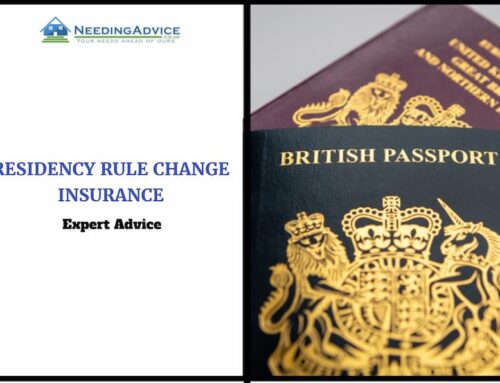Relevant life insurance is a practical option for employers looking to provide a cost-effective and tax-efficient life insurance plan for their employees. The payout from a valid claim is provided to the claimant’s family or financial dependents.
Who Is Permitted To Have One?
- The employee must be a resident of the UK and employed by a business also based in the UK (England, Wales, Scotland, and Northern Ireland only). Employees in the UK can include company directors and salaried partners.
- Smaller businesses who may not have enough employees to qualify for a group insurance plan.
- High earners who may opt out of having their group death-in-service lump sum benefits tested against their lump sum and death benefit allowance within their pension benefits.
- Employees who are seeking to supplement the benefits provided by their employer’s scheme.
Who Isn’t Eligible?
Members of different types of business entities include those in Limited Liability Partnerships, Sole Traders, Traditional English Partnerships, and Shareholders who are not employees.
Tax Treatment
The company holds a Relevant Life Cover policy. Employers pay premiums for insurance policies, which can be used to offset against corporation tax if the policy is included in the employee’s remuneration package.
It is required to be solely used for trade and cannot be classified as a business asset. The primary goal should not be tax avoidance. Businesses are not required to pay National Insurance on relevant life premiums, resulting in cost savings.
For a relevant life insurance policy to receive favorable tax treatment, it must adhere to specific HMRC requirements.
The policy is solely for protection and does not have any surrender value.
This policy only provides coverage for employees, not for shareholders who are not employees.
Is It Deductible?
Life insurance can be beneficial for both employees and employers in reducing tax liability. Both the employer and the employee will be exempt from paying National Insurance contributions, and since the business owns and pays for the relevant life insurance, policy premiums should be considered as a tax-deductible business expense. Premiums must be paid solely for business purposes in order to be considered deductible.
A Relevant Life Plan is not subject to a Pensions Lifetime Allowance Charge, as it does not fall under the annual or lifetime pension allowances based on current tax rules.
If a valid claim is submitted, the cash payout will be exempt from UK Income Tax, National Insurance, and Capital Gains Tax. When an employer establishes a Relevant Life policy written into trust, the benefits paid should not be included in the deceased’s estate and therefore should not be subject to Inheritance Tax.
Is It a Benefit?
Premiums are typically not considered employee income or classified as a benefit in kind.
Relevant life policy tax relief offers tax benefits for both employers and employees, making it an attractive option for businesses seeking to attract and retain top talent through a comprehensive benefits package.
Advantages
Implementing a life insurance policy for your employees can have tax benefits for both your business and your employees. Although it provides substantial benefits to higher earners, it can still be offered to all employees.
- The employee is not subject to income tax on the benefits received.
- Inheritance tax does not typically apply to them. In some instances, there may be a periodic tax fee applied to the trust. Life policies are often set up with a discretionary trust to ensure they are not included in an employee’s estate for inheritance tax purposes. If a company director or high net worth employee is at or near the nil rate band, it could significantly impact the amount of tax they owe. The payment will not be subjected to probate, allowing the funds to be received by the family immediately after the covered person’s death.
- Relevant life plan benefits do not count towards an employee’s lump sum and death benefit allowance for pensions, unlike lump sums from a registered pension scheme. For high earners, a relevant life plan can be a beneficial option to consider instead of a group scheme.
- Insurance premiums for relevant life policies can be considered a business expense for corporation tax purposes, allowing your business to claim tax relief on premiums and reduce its overall tax bill.
- Lower National Insurance payments – Another benefit is that relevant life insurance is not considered a P11D benefit in kind, so National Insurance contributions do not need to be paid on premiums. This also results in a decreased amount of paperwork required for submission to HMRC.
Additional Benefits For High Earners
The pension lifetime allowance impacts all taxpayers, with a focus on company directors and high earners. The lifetime pension allowance is the tax-free amount that can be received from both a life policy and pension. The current allowance is £1,073,100, and any amounts exceeding that are subject to a 55% tax rate.
A company director or high net-worth individual may already have group life cover and have made pension contributions that are substantial, but they may still choose to make additional provisions for their loved ones.
A group life insurance policy is included in the benefits package, while a relevant life policy is not as it is held in a relevant life trust. Businesses can provide extra death-in-service benefits without surpassing the lifetime allowance and causing a significant rise in their tax liability.
Determining the amount of allowance a employee has utilized
Pensions and group life policies are registered with HMRC for employees to track their allowance usage. A pensions adviser may request information about any additional pensions an employee may have in order to ensure proper registration and assess how they may affect the allowance. A financial adviser can assist employees in locating other pension funds.
Seek Advice From a Professional
For assistance in finding the right life insurance for your business, feel free to reach out to our team of brokers for a quote.
The details and rates provided in this article are based on the most recent information available as of 10 June 2024. Please be aware that these figures may change over time. It is advisable to verify the latest information directly with the insurance provider before making any decisions.
This warning also applies to the information on the following pages:






Leave A Comment